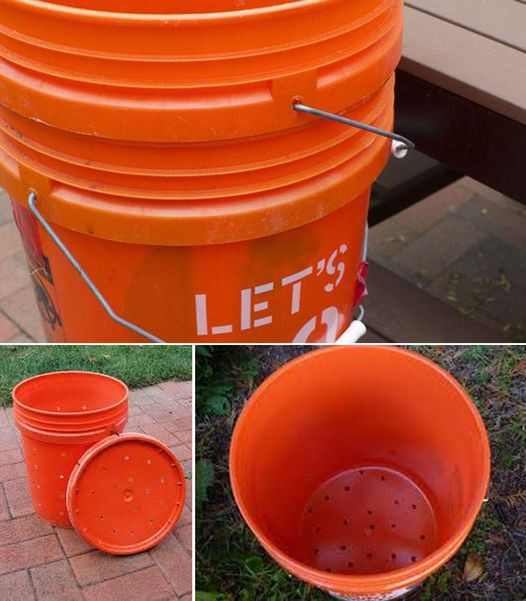Worm towers are a fantastic addition to any garden, promoting soil health and aiding in the decomposition of kitchen waste into nutrient-rich compost. By using repurposed buckets, you can create a worm tower at virtually no cost, enhancing your garden’s productivity and sustainability. This guide will walk you through the steps to construct your own worm tower using old buckets, along with tips on maintenance and benefits.
What is a Worm Tower?
A worm tower, also known as a worm tube or worm bin, is an in-garden composting solution that allows worms to move freely between the tower and the surrounding soil. This process naturally aerates the soil and improves its nutrient content by breaking down organic matter directly within the planting area.
Materials Needed
- Old Bucket: 5-gallon plastic buckets work best. Ensure they’re clean and free from harmful residues.
- Drill: For creating drainage and entry holes.
- PVC Pipe or Lid: For covering the top to prevent pests.
- Shredded Newspaper or Cardboard: For bedding.
- Worms: Red wigglers are the most efficient for worm composting.
- Organic Waste: Kitchen scraps like vegetable peelings, coffee grounds, and fruit waste.
Step-by-Step Guide to Building a Worm Tower
Step 1: Prepare Your Bucket
- Drilling Holes: Drill multiple holes around the sides and bottom of the bucket for drainage and to allow worms to enter and exit. The holes should be about 1/4 inch in diameter.
Step 2: Set Up Location
- Choosing a Spot: Select a location in your garden that’s somewhat shaded, as worms thrive in cooler, moist conditions. The tower should be easily accessible but not in the way of regular gardening activities.
Step 3: Add Bedding and Worms
- Bedding: Fill the bottom of the bucket with a few inches of moistened shredded newspaper or cardboard. This provides a comfortable environment for the worms.
- Adding Worms: Add a handful of composting worms. Red wigglers are preferred due to their composting efficiency.
Step 4: Add Organic Waste
- Feeding: Start adding your kitchen scraps to the tower. Avoid meat and dairy products to prevent odors and pests.
Step 5: Maintain and Monitor
- Cover: Use a cut piece of PVC pipe or a lid to cover the top, keeping out pests and excessive rain.
- Regular Checks: Monitor moisture levels and add water if it becomes too dry. Feed the tower small amounts regularly rather than large amounts sporadically.
Benefits of a Worm Tower
- Soil Enhancement: Worm castings enrich the soil, boosting its fertility and structure.
- Plant Health: The direct release of nutrients near plant roots can enhance growth and yield.
- Waste Reduction: Reduces household waste by turning it into valuable compost.
A Sustainable Cycle in Your Garden
Creating a worm tower from an old bucket is an easy, cost-effective way to contribute to your garden’s ecological balance. It supports a continuous cycle of waste reduction and soil enhancement, leading to healthier plants and more bountiful harvests. Start building your worm tower today and step into the world of sustainable gardening practices.


